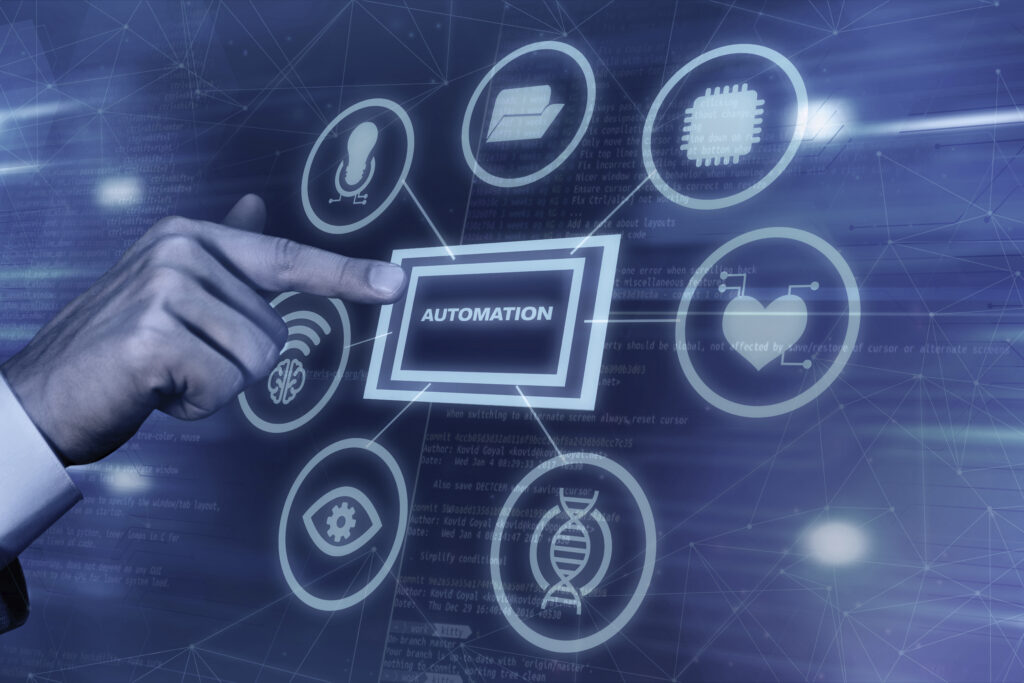Cybersecurity is fundamental in the modern digital world. With increasing digitalization and evolving cyber threats , ensuring the security of systems and data has never been more important.
Studies indicate that global cybercrime costs are expected to reach US$10.5 trillion annually by 2025.
Therefore, companies are increasingly investing in technologies to prevent attacks and avoid significant financial and reputational losses.
In this context, automation comes as a promising solution to optimize cybersecurity, offering both the ability to quickly respond to incidents and minimize human errors.
In this article, we will explore the concept of automation in cybersecurity , its benefits, the main technologies involved, the challenges and steps for its implementation.
Good reading!
What is automation in cybersecurity?
In short, automation in cybersecurity involves the use of technologies to perform security tasks with minimal human intervention.
This includes detecting, analyzing and responding to threats more quickly and efficiently than would be possible with human professionals.
With automation, companies can handle a high volume of alerts and malicious activity, freeing cybersecurity professionals to focus on more complex issues.
Main advantages of automation:
- Speed and efficiency: automated systems can process large volumes of data quickly, identifying and mitigating threats in real time;
- Consistency: reduce the possibility of human errors. Automation ensures that the same rules and procedures are followed consistently;
- Scalability: facilitates the protection of complex networks and systems without the need to proportionally increase the security team.
Automation examples:
- Detection and response tools: solutions that use advanced algorithms to identify anomalous behavior and automatically act to neutralize threats;
- Malware analysis: use of artificial intelligence techniques to effectively recognize and isolate malware;
- Vulnerability management: systems that scan networks and devices for known vulnerabilities and apply necessary patches without manual intervention.
Next, we will go deeper into the benefits that this type of technology offers to cybersecurity systems.
Benefits of automation in cybersecurity
As we quickly showed in the previous topic, automation, when used in cybersecurity, offers advantages for protecting IT systems, including greater efficiency, reduced human errors and agile response to threats.
These improvements are fundamental to ensuring data integrity, information security and mitigating risks related to leaks and attacks.
See some of the benefits in more detail:
Rapid response to threats
One of the advantages of automation is the possibility of immediate detection and response to cyber threats.
This is because, with the use of artificial intelligence , automated systems can identify suspicious patterns and isolate threats without the need for human intervention, reducing downtime and minimizing potential damage.
Services such as automated firewalls and intrusion detection systems work around the clock, ensuring continuous protection . It is an essential level of vigilance to face the growing volume of cyberattacks today.
Reduction of human errors
Another positive point is that automation minimizes common human errors during monitoring and incident response.
Manual processes are prone to failure, especially in high-pressure scenarios. With automation, critical tasks are performed accurately and consistently , reducing the chances of errors that could compromise the organization's security.
For example, processes such as applying security patches are managed automatically, ensuring that no detail is forgotten.
Scalability and efficiency
As companies grow, the volume of data and the number of threats also increase. Automation allows cybersecurity solutions to scale with the organization's needs.
This happens due to the security tools and processes
AI -based automations are capable of predicting and neutralizing future threats, dynamically adjusting to security needs.
The ability to scale quickly is critical in an ever-changing cyber environment, which makes automation an indispensable tool for any effective cybersecurity
Main automation technologies in cybersecurity
Now that we understand more about the concept and benefits of automation in cybersecurity , let's look at the technologies involved?
Among the most important are artificial intelligence, threat detection systems and process automation.
Artificial intelligence and machine learning
Intelligence (AI) and Machine Learning (ML) play extremely important roles in the cybersecurity automation process. This is because these technologies allow the analysis of large volumes of data in real time, identifying anomalous patterns that may indicate threats.
These technologies are used in several areas of cybersecurity, such as fraud detection, behavior analysis and threat classification.
With continuous learning, these systems become more accurate and adaptable to new forms of attacks.
Incident detection and response (IDR) systems
Incident Detection and Response (IDR) Systems are essential tools for protecting an IT environment.
They help identify and respond to suspicious activity by using advanced algorithms to monitor and analyze security events in real time.
Furthermore, this type of system triggers automatic responses when a threat is detected. This includes isolating compromised systems and mitigating ongoing attacks.
Robotic process automation (RPA)
Robotic Process Automation (RPA) applies automated scripts to repetitive tasks that humans would do, such as security checks and responding to alerts.
This allows for more efficient systems administration , reducing human errors.
RPA can be used in user authentication, network monitoring , and patch management, ensuring that security practices are consistently applied.
Furthermore, the use of this technology facilitates compliance with specific regulations , optimizing corporate security.
Challenges of automation in cybersecurity
As we have seen, adopting automation measures and technologies in cybersecurity can be very beneficial for companies, however, this process is not immune to challenges.
In this section, we will see a little about this topic. Among the challenges that may arise are the complexity of implementation, the high initial cost and the dependence on advanced and specific technology.
Implementation complexity
While the benefits are significant, implementing automation in cybersecurity can be complex.
This is because integrating new technologies with pre-existing IT systems and infrastructures requires careful and strategic planning .
Legacy systems are often not compatible, requiring extensive reconfigurations or even complete replacements.
There is also a need for accurate configuration of protocols and parameters to prevent failures and ensure that automated responses are appropriate to threats. Improper configurations can lead to false positives or critical omissions, compromising security.
Additionally, the IT team needs to have in-depth knowledge of the tools and processes to manage the implementation efficiently. This may also require specialized training or hiring external consultants.
High initial cost
This is one of the main obstacles in adopting automated cybersecurity solutions.
Advanced tools and automation systems tend to be expensive, requiring an investment in hardware and software.
Furthermore, it is necessary to consider not only the acquisition, but also the associated costs, such as periodic maintenance, updates and possible expansions.
Small and medium-sized businesses can find it particularly challenging to justify such expenses, especially when the long-term benefits are difficult to immediately quantify.
Technology dependency
Automation induces a dependence on technology. Automated systems require a robust technological infrastructure to function well. Any system failure or unavailability can compromise security and expose critical vulnerabilities.
Furthermore, this dependency increases the need for regular updates and constant maintenance . Outdated tools can become ineffective, especially as new threats emerge and evolve.
Technological dependence also implies risks such as the possibility of bugs or failures in the automation systems themselves.
Steps to implement automation in cybersecurity
To implement automation in cybersecurity effectively, it is necessary to follow some steps such as:
1. Assess needs and risks
Identify critical security areas that would benefit from automation. Assess the associated risks and prioritize the most relevant threats.
2. Set clear goals
Set specific goals for automation. For example, reducing incident response time or improving threat detection. With this well defined, the following steps will become smoother.
3. Choose suitable tools
Once the company's needs have been assessed and the objectives have been defined, it is time to choose the tools and platforms that best adapt to this scenario. Research the best options on the market and keep in mind that integrations with existing systems are essential for efficiency.
4. Configure and test automation processes
Configure automation processes according to previously defined needs and objectives. Additionally, test thoroughly to ensure they work as expected.
5. Monitor and adjust
Then, you need to continuously monitor automated systems. This is crucial to see if everything is working or if adjustments and optimizations need to be made.
Future of automation in cybersecurity
Automation in cybersecurity is advancing rapidly and promises to transform the way organizations deal with digital threats. As we have seen, automation tools allow detection and response to incidents in real time, significantly reducing reaction time.
Furthermore, with the advancement of AI and machine learning technologies, security systems will become increasingly intelligent and proactive.
However, constantly evolving threats mean that automation must be complemented with comprehensive and adaptable security strategies.
Automation does not replace the need for human talent, but complements their skills, allowing us to focus on more complex and strategic tasks.
Your company protected with Skyone
Now that you understand the importance of automation in a cybersecurity strategy, it's time to apply this knowledge. To do this, count on the support of a partner specialized in the subject!
Skyone offers advanced information security solutions, helping companies protect their assets against cyber threats.
Our cybersecurity module has a wide range of effective and reliable products for your business, including a continuous threat analysis service and Endpoint Detection and Response.
Everything to keep your company protected and you at peace of mind!
Talk to our experts and request a demo!
Conclusion
Automation is an trend in cybersecurity. Throughout the article we saw why companies are increasingly following this path.
By automating repetitive and complex tasks, you can improve threat detection , reduce incident response times, and free up security analysts to focus on more strategic activities.
Furthermore, with the help of automated tools, the number of human errors drops, consequently increasing the security efficiency of the IT environment.
However, as we have seen, implementing automation requires planning , investment and technical knowledge.
But by implementing automated processes correctly and overcoming the challenges, you can reap the benefits and significantly strengthen your security posture.
Want to know more about cybersecurity? Read the special text we wrote on the subject!





